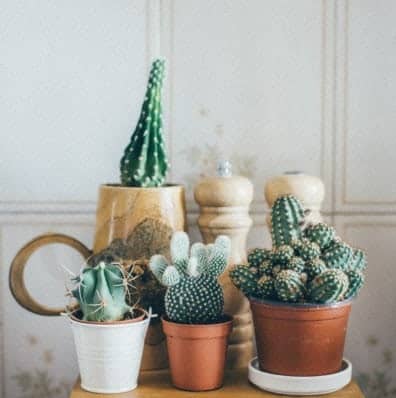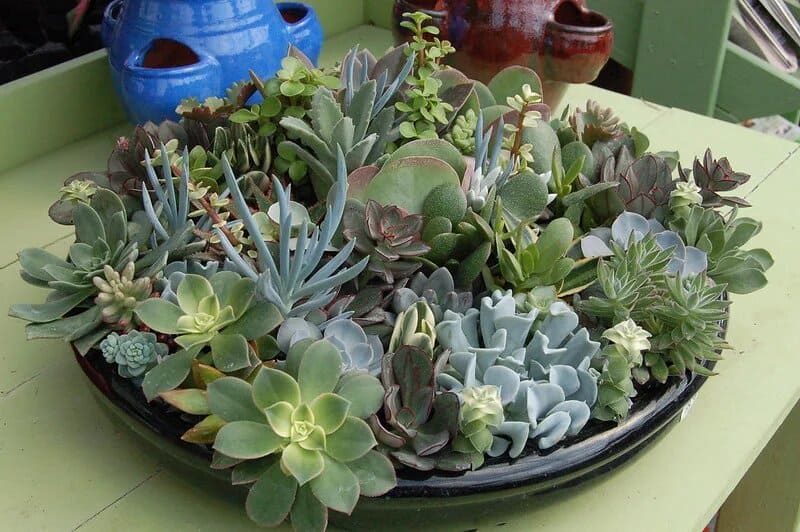Optimal Fertilizing Schedule for Succulents: Maximizing Growth
Do you want to give your succulents the best care possible? You might have heard that these tough little plants can survive with hardly any attention, but here’s a tip: They really perk up with a bit of extra food. Feeding your succulents every now and then can work wonders! Let’s dive into how you can keep them happy and thriving with the right fertilizing routine.
Contents
How Often To Fertilize Succulents

How often to invite fertilizer over? Once a month is plenty if you’re mixing up your own blend, like a nice manure tea. But really, for the homebodies (your indoor succulents), a yearly bash is enough.
Here’s why: Fertilizers get succulents so excited they might grow a little too wild and stretch out if they’re not sunbathing enough. If you can bring them outside to a sunny, cozy spot after their meal, they’ll stay cute and compact.
No garden space? No worries! Find the sunniest spot inside or consider a grow light to give them the rays they crave.
When To Fertilize Succulents
Spring is like a wake-up call for many succulents—they hear the dinner bell and know it’s time to grow. That’s the best moment to fertilize. But if your succulent is more of a winter party animal, then a fall feast might be better.
Do Succulents Need Fertilizer?
Just like us, succulents need a good meal to grow strong and healthy. You might not need to fuss over them with fertilizer if you’re a whiz at repotting your little plant pals every year or two with fresh, nutrient-packed dirt. But, if life gets busy and repotting is a no-go, a sprinkle of fertilizer now and then is like a surprise gourmet treat for your succulents.
Remember, while succulents get some of their food from soil, a well-chosen fertilizer can really jazz up their look, making them burst with vibrant colors. Just make sure not to overdo it – you wouldn’t want to give them a tummy ache with too-strong fertilizer! A gentle, succulent-friendly fertilizer every couple of months can turn your plants from just okay to oh-wow!

What Fertilizer is Best for Succulents?
When you’re on the hunt for the right fertilizer, you’ve got options:
- Grab one specially made for succulents and cacti.
- Pick a general planter’s mix but go easy—use a bit less than the bag suggests.
- Roll up your sleeves and whip up a batch of homemade plant food just for your green buddies.
The thing is, special succulent fertilizers are as rare as a cactus in a snowstorm, since succulents are a motley crew with all kinds of different diets. If you can’t find the succulent-specific stuff, a regular plant fertilizer with a gentle touch will do the trick.
For example, a balanced fertilizer, let’s say with a mix of 8-8-8 (that’s plant-talk for equal parts nitrogen, phosphorus, and potassium), diluted more than usual, should be gentle enough. Fertilize once a month and watch your succulents come alive.
Now, let’s talk about what not to bring to the party.
Fertilizers to Avoid Like Overwatered Soil
Steer clear of fertilizers that are heavy on nitrogen. Too much nitrogen is like junk food for plants; it pumps them up quick, but leaves them open to buggy bullies. Plus, you don’t want to go harsh with chemical fertilizers. Going organic is kinder to your succulents’ delicate skins and roots.
How To Fertilize Succulents
Are you ready to play chef for your succulent family? Here’s how to whip up a nutrient feast that’ll have your plants saying, “Yum!” Fertilizing your succulents doesn’t need to be as complex as a five-star meal—it can be as easy as making a sandwich!
Step 1: Pick the Perfect Time
Timing is everything! Spring is the season when most succulents are stretching after their winter nap and are ready to grow. That’s when they’re most hungry for a nutrient boost.
Step 2: Choose Your Fertilizer Wisely
Imagine you’re at a buffet. Your succulents don’t need the heavy stuff. Go for a balanced, gentle fertilizer, like the kind with an 8-8-8 mix (that’s an equal balance of nitrogen, phosphorus, and potassium). Or even better, since succulents are light eaters, cut that strength back. Less is more.
Step 3: Dilute, Dilute, Dilute!
Remember how we said less is more? Here’s where it comes into play. Mix your chosen fertilizer with water—make it weaker than the directions say. Treat it like a delicate tea you’re brewing, rather than a strong coffee.
Step 4: Gentle Application is Key
Now, don’t go pouring that fertilizer tea all over the plant. Aim for the soil, giving it a nice drink around the base of your succulent. This way, the roots can slurp up the good stuff without overwhelming the leaves.
Step 5: Don’t Overfeed
Your succulents are more like grazers than big-meal eaters. A small serving of fertilizer once a month during the growing season (usually spring and summer) is plenty. For indoor succulents, a yearly treat may be all they need.
Step 6: Watch and Learn
After serving up the nutrients, keep an eye on your green buddies. They’ll tell you how they’re feeling by how they look. If they’re vibrant and growing, you’ve got the recipe just right. But if they start stretching out or change colors, adjust the menu for next time.
Frequently Asked Questions (FAQs)
What fertilizer for baby succulents?
Think of baby succulents as little plant kiddos who need just the right kind of food to grow up big and strong. The plant-world’s version of home-cooked meals, like manure tea, liquid hummus, or compost tea, are top-notch choices for these little guys. They’re gentle and packed with all the good stuff to help your baby plants flourish.
Sure, whipping up these homemade treats might not be for everyone. If you’re not up for DIY plant food, no sweat—you can find ready-to-serve fertilizers at the garden store or online. Just pick up a bottle and your baby succulents are all set for a growth spurt.
Is osmocote good for succulents?
Osmocote is a name you might stumble upon, especially on Amazon*, and guess what? It’s a pretty handy buddy for your succulents when they’re craving a nutrient boost. Here’s why it rocks:
*This is an affiliate link, as an Amazon Associate we earn from qualifying purchases.
- It gets the roots tough and ready to support some awesome plant growth.
- It’s tailored for plants that come back every year, like some trusty succulents.
- It’s all about making your blooms pop with color and your veggies taste like they’re straight from the farm.
- And the cherry on top? One application can keep your succulents munching on nutrients for up to four months!
